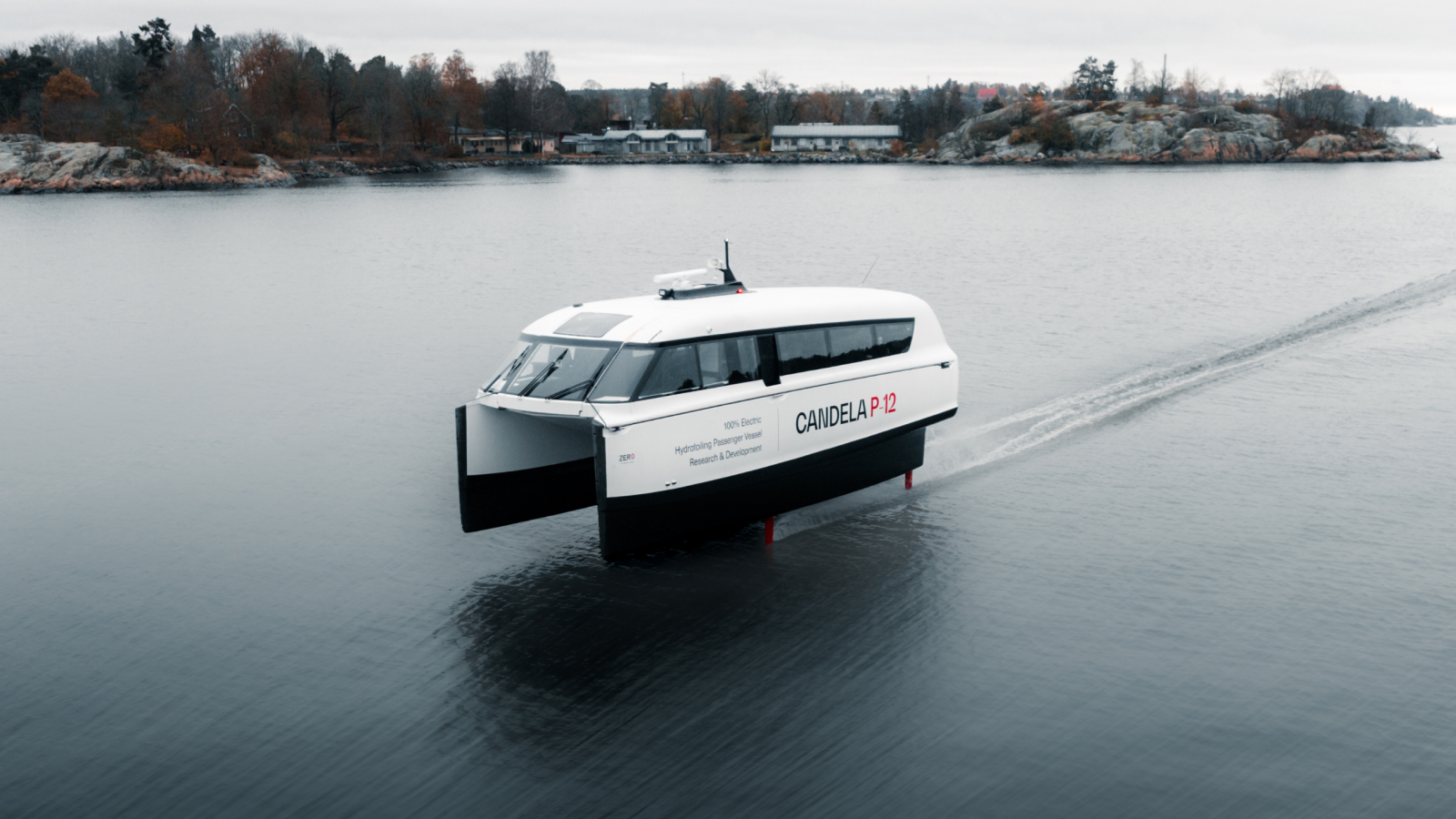
The world's first electric flying passenger ship has completed test flights in Sweden and will now enter production ahead of its introduction into Stockholm's public transport network in 2024.
The Candela P-12, designed by Swedish tech company Candela Technology AB, is 39 feet (12 meters) long,runs on a 252 kilowatt-hour battery and can carry up to 30 passengers. By contrast, the battery in a 2024 Tesla Model 3 is up to 75 kWh.
It will fly at up to 25 knots (29 mph, or 46 km/h) — although it can reach maximum speeds of 30 knots (35 mph, or 56 km/h ) — with a range of up to 50 nautical miles (92.6 kilometers).
"It will revolutionize how we travel on water," Gustav Hasselskog, CEO of Candela, said in a statement.
Related link: How do electric batteries work, and what affects their properties?
The vessel "flies" using hydrofoils, which are lifting surfaces that operate in water to elevate a boat's hull above the water's surface — similar to airfoils that help planes lift off from the ground. Hydrofoils reduce drag from the water, which enables vessels to achieve greater speeds while using less power than conventional boats.
The P-12 uses computer-guided hydrofoils to elevate its hull, and it consumes 80% less energy while moving at speeds of more than 18 knots (21 mph, or 33 km/h) versus traditional vessels, the company said in the statement.
Candela's flying ship runs with two custom-made engines with 340 kilowatts of total peak power. When in flight, the P-12's digital flight control system can adapt to waves, wind and water currents by adjusting the hydrofoils' angle up to 100 times per second. This system may help to reduce the chances of passengers experiencing seasickness, the company said in the statement.
The P-12 also aims to be more sustainable than conventional vessels because it runs on electric power. Most electric ships built to date have a limited range and slow speeds due to the excessive energy consumption of their hull, keeping adoption rates low. But the P-12's reduced water friction, thanks to its hydrofoils, lets it run using less power than conventional boats and therefore travel farther using battery power.
From next year, the electric vehicle will fly on a TK mile route between the Ekerö suburb and Stockholm's city center — slashing a 55-minute commute to just 25 minutes thanks in part to the fact it's exempt from speed limits due to producing less wake while traversing water.
"Today, in many cities, congested roads are common while waterways — humanity's oldest transport infrastructure — remain underutilized for rapid commuting," Hasselskog said in the statement. "The P-12 will let you use these waterways as green highways, enabling fast intra-city connections. Often, the quickest route is by water."







